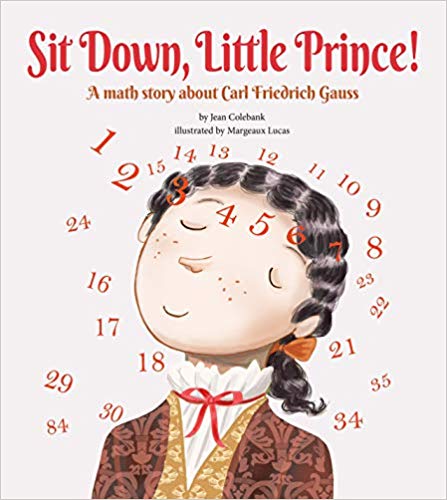Sit Down, Little Prince!: A math story about Carl Friedrich Gauss is a perfect way to introduce children to one of history’s most famous mathematicians. In this 32-page picture book, children meet Carl Friedrich Gauss as a child through a story written by Jean Colebank that is accompanied by lovely, full-color illustrations by Margeaux Lucas.
Loosely based on biographical details that we know, the book relates the story of the gradual discovery that Gauss was a mathematical prodigy. Since his family was poor, they had to sacrifice to send him to school. In the story, Gauss first pretends to struggle with math to fit in with the other boys. However, he can’t resist the challenge when the teacher poses what should be a very difficult problem. He solves it quickly and accurately, alerting his teacher to his disguised genius. The story concludes with Gauss being sent on to a university where he would be appropriately challenged. His brilliance earned him the title, “Prince of Mathematicians.”
This story works on a level beyond the biographical. Many children struggle with the desire to fit in and have friends, and some of them downplay their strengths to avoiding standing out or being labeled as a teacher’s pet. In this case, young Gauss is warned that if he answers correctly, the teacher will have him become his assistant and require him to stay indoors during recess to help correct the work of other students, and Gauss doesn’t want to miss a moment of playtime. We don’t know the actuality of Gauss’s interactions with other children, but the scenario posed in this story seems plausible.
Nothing bad happens to Gauss in the story, so the overall message is positive and encouraging. Children should come away with the idea that it’s okay to stand out from the crowd academically. The brevity of the story, the picture book layout, and the lack of any serious conflict make Sit Down, Little Prince! most appropriate for children about ages five through eight.









